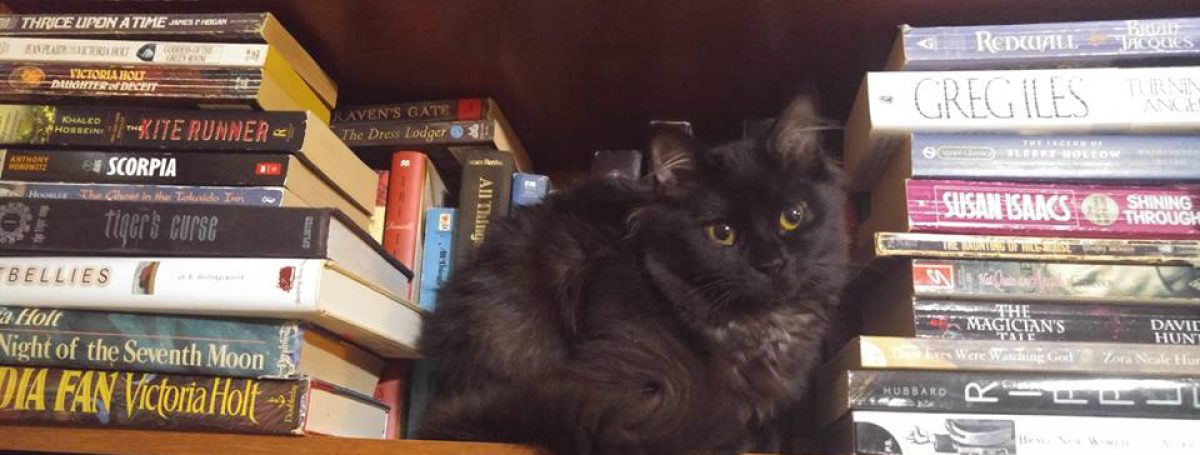 Although much of Station Eleven takes place in Toronto, I selected it for Michigan due to the time spent in the Severn City Airport, which was used to represent Grand Rapids, Michigan’s airport. Well, that and I came across the fact that aside from Jeffrey Euginides’ works, this was the only Michigan-set book on the list. And I’m saving Euginides’ Middlesex for another occasion. So, that meant that this post-apocalyptic novel set mostly around the Great Lakes was the perfect pick for Michigan.
Although much of Station Eleven takes place in Toronto, I selected it for Michigan due to the time spent in the Severn City Airport, which was used to represent Grand Rapids, Michigan’s airport. Well, that and I came across the fact that aside from Jeffrey Euginides’ works, this was the only Michigan-set book on the list. And I’m saving Euginides’ Middlesex for another occasion. So, that meant that this post-apocalyptic novel set mostly around the Great Lakes was the perfect pick for Michigan.
Station Eleven was originally published in 2014 and was Mandel’s fourth novel, and to date, her highest selling. The book was met with praise and won the Arthur C. Clarke Award in 2015, as well as the 2015 Toronto Book Award. It was nominated for the U.S. National Book Award, the PEN/Faulkner, and Baileys Women’s Prize for fiction. The book was originally set to become a film, but in October 2019, the plan was changed to a 10 episode miniseries on HBO. Of course, the first time I heard of the book, it was because my hometown has a city wide book club and this was the book chosen. (Despite my hometown being on the opposite side of Ohio from all the action in the book.)
One thing that should be noted is that this book skips around the timeline without a whole lot of warning. The basis of the novel is humanity dealing with a virus that wipes out 99.9% of all humans within a matter of weeks. The book switches from the Before, including up to a decade prior for one character, and the After, which starts on Day 0 and goes to about 20 years after the virus. The time skips are generally to explain some part of the future landscape, such as explaining who created the graphic novel, Station Eleven, or the origins of the antagonist, the Prophet. However, there is certainly a limited scope, with most of the action revolving around people that interacted with Arthur Leander, a movie actor from the time Before. I actually wish the author had expanded more on the time after, as there is a unique take on humanity trying to keep the arts alive that I’ve rarely seen in post apocalyptic works.
As I’ve stated, the book sort of reads like a six degrees of separation from Arthur Leander. Which means, any important character will have interacted with him, or interacted with the first degree of separation to some extent. Alternatively, you could say that Arthur’s first wife, Miranda, is the actual hub from which all of the other spokes go to the wheel of the story, but honestly, Arthur makes the most sense. All those that have interacted with both Miranda and Arthur are the most vibrant in the book, having plenty of shades to their character and both a pre- and post-virus personality. However, this does mean that as characters start entering degrees of separation from those two central points, the characterization starts to decline, until you end up with someone called the Third Clarinet instead of a name.
The setting is sort of a jumble of plenty of description or no description at all. There are bright spots, like Miranda’s art studio in her home with Arthur, and then largely unknown regions, like Jeevan’s various locations after the virus. Characters, for the most part, are well described, but much like their personalities, they get better descriptions and more clothing choices the closer they are to Arthur and Miranda in degrees of separation. I think one of my favorite descriptions of any of the scenes is Jeevan’s scramble in the grocery store, because I can just about see the small corner grocery store and the seven carts in a Midwest snow drift. I also enjoy the chapters set in what is likely the Grand Rapids airport, as the descriptions are enough to visualize the community there without being overly detailed.
Overall, I rather enjoyed the book. It’s certainly one of those books that might require a corkboard and string to see how all of the characters interact, but I found the take on post-virus Great Lakes region to be fascinating.
I look around sometimes and I think – this will maybe sound weird – it’s like the corporate world’s full of ghosts. And … maybe a fairer way of putting this would be to say that adulthood’s full of ghosts. – Emily St. John Mandel
If you like the review, please like and comment. You can also follow me for more reviews as I read through the list. And if you want a copy of the book for yourself, simply click on the book’s image to go directly to it’s page on Amazon.

One thought on “Book #337 – Station Eleven by Emily St. John Mandel”